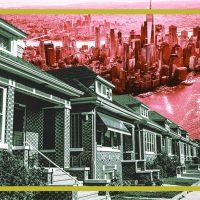Strong demand to buy homes and limited supply at a national level hasn’t trickled down to the Manhattan market.
Listing inventory soared in the third quarter as the number of sales in the borough dropped by nearly half compared to the same period last year, according to Douglas Elliman’s July to September sales report. It marked the second consecutive quarter that inventory rose.
On a national level, “Manhattan was the laggard,” said appraiser Jonathan Miller, the report’s author.
Closed sales in Manhattan fell 46 percent year-over-year to 1,375, compared to 2,562 a year earlier, according to the report. That’s the sharpest drop in deals since the second quarter of 2009.
The number of transactions in Q3 ticked up a mere 1.3 percent, compared to the second quarter of the year. That’s when the city was under lockdown and the number of deals plunged in what was the sharpest decline in 30 years.
Read more



The lack of Manhattan transactions supports the pessimism some in the brokerage community expressed as the city reopened in June.
But a dearth of sales doesn’t mean agents haven’t been busy. Listing inventory in Manhattan was at its highest level since 2009, when there were 10,445 units on the market in the first quarter and 9,378 in the second quarter.
Listing inventory in the third quarter of 2020 doubled compared to the second quarter. From July through September, 9,319 co-op and condo units listed for sale, compared to 6,225 from April through June.
The year-over-year increase in the borough’s inventory is also now at 27 percent.
The surge in listings, based on the current pace of sales, has extended the absorption rate to 20.3 months, up from 13.8 months in the second quarter and 8.6 months a year ago.
But an unexpected bright spot for the quarter was pricing. Prices rose in Q3 with the median sales price jumping 7 percent year-over-year to $1.1 million. Breaking that down by asset type, resale prices were largely flat, but new developments’ median sales prices increased nearly 18 percent to $2.9 million, from $2.4 million over the same period last year.
But Miller called the rising prices a distortion that reflects contract activity during Q2’s lockdown, where higher-priced homes continued to go into contract and subsequently closed during Q3 to drive up prices.
“Closings are still more anchored to the actual Covid moment,” he said.
Contract activity in Manhattan has remained low compared to previous years, and throughout the third quarter, the majority of new contracts in the borough were signed at lower price points.
According to Elliman’s monthly report on contract activity in New York and surrounding suburbs, 233 condos in Manhattan went into contract in September, down 52 percent from a year earlier. Co-ops were down 33 percent and seven single-family homes deals were inked. The low activity makes Manhattan, once again, an outlier compared to Brooklyn and suburban areas that include Long Island, Westchester and the Hamptons, along with Greenwich and Fairfield County in Connecticut. In all those areas, contract activity has soared, according to the report, which is also produced by Miller.
But Miller noted that the growth in contract activity is starting to plateau in most suburban markets. He attributed that to pent-up demand from the dismal spring homebuying season being met over the summer.
“The question is does this outbound migration continue and, if it does, how long?” he said.
